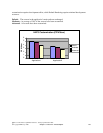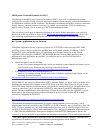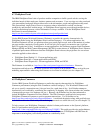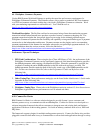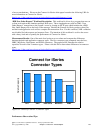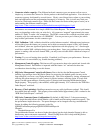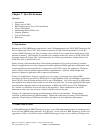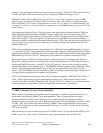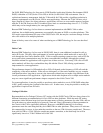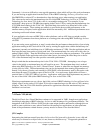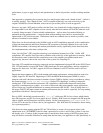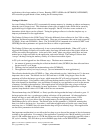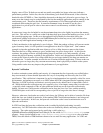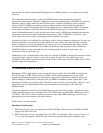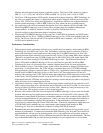
option for Java applications which require large amounts of memory. The Classic VM remains available
in V6R1, but future i5/OS releases are expected to support only IBM Technology for Java.
The default VM in V6R1 is IBM Technology for Java 5.0, 32-bit. Other supported versions of IBM
Technology for Java include 5.0 64-bit, 6.0 32-bit, and 6.0 64-bit. (6.0 versions will require the latest
PTFs to be loaded.) The Classic VM supports Java versions 1.4, 5.0, and 6.0. In V5R4, the default VM
is Classic 1.4. Classic 1.3, 5.0, and 6.0 are also supported, as well as IBM Technology for Java 5.0 32-bit
and 6.0 32-bit.
Java applications using the Classic VM will generally have equivalent performance between V5R4 and
V6R1, although applications which use JDBC to access database may see some improvement. The
Classic VM no longer supports Direct Execution (DE) in V6R1; all applications will run with the Just In
Time (JIT) compiler. As a result, applications which previously used DE may see some performance
difference (usually a significant improvement) when moving to V6R1. Because the same underlying VM
is used for all versions of Classic, most applications will see little performance difference between the
different JDK levels.
V6R1 offers significant performance improvements over V5R4 when running IBM Technology for Java
-- on the order of 10% for many applications, with larger improvements possible when using the -Xlp64k
flag to enable 64k pages. In addition, there are substantial performance improvements when moving from
IBM Technology for Java 5.0 to 6.0. Performance improvements are frequently introduced in PTFs.
Recent generations of hardware have greatly improved the performance of computationally-intensive
applications, which include most Java applications. Since their introduction in V5R3, System i5 servers
employing POWER5 processors – models 520, 550, 570, and 595 – have a proven record of providing
excellent performance for Java applications. The POWER5+ models introduced with V5R4 build on this
success, with performance improvements of up to 30% for the same number of processors in some
models. The new POWER6 models introduced in 2007 provide further performance gains, especially for
Java applications, which tend to be computationally intensive.
The 515 and 525 models introduced in April, 2007 all include a minimum of 3800 CPW and include L3
cache. These systems deliver solid Java performance at the low-end. Other attractive options at the
low-end are the 600 and 1200 CPW models (520-7350 and 520-7352), which have an accelerator feature
which allow them to be upgraded to 3100 and 3800 CPW (non-interactive), respectively.
7.3 IBM Technology for Java (32-bit and 64-bit)
IBM’s extensive research and development in Java technology has resulted in significant advances in
performance and reliability in IBM’s Java implementations. Many of these advances have been
incorporated into the i5/OS Classic VM, but in order to make the latest developments available to
System i customers as quickly as possible, IBM introduced a new 32-bit implementation of Java to i5/OS
in V5R4. This VM is built on the same technology as IBM’s VMs for other platforms, and provides a
modular and flexible base for further improvements in the future. In V6R1, a 64-bit version of the same
VM is also available.
IBM Technology for Java currently supports Java 5.0 (JDK version 1.5) and (with the latest PTFs) Java 6
(JDK version 1.6). Older versions of the JDK are only supported with the Classic 64-bit VM.
IBM i 6.1 Performance Capabilities Reference - January/April/October 2008
© Copyright IBM Corp. 2008 Chapter 7 - Java Performance 126



